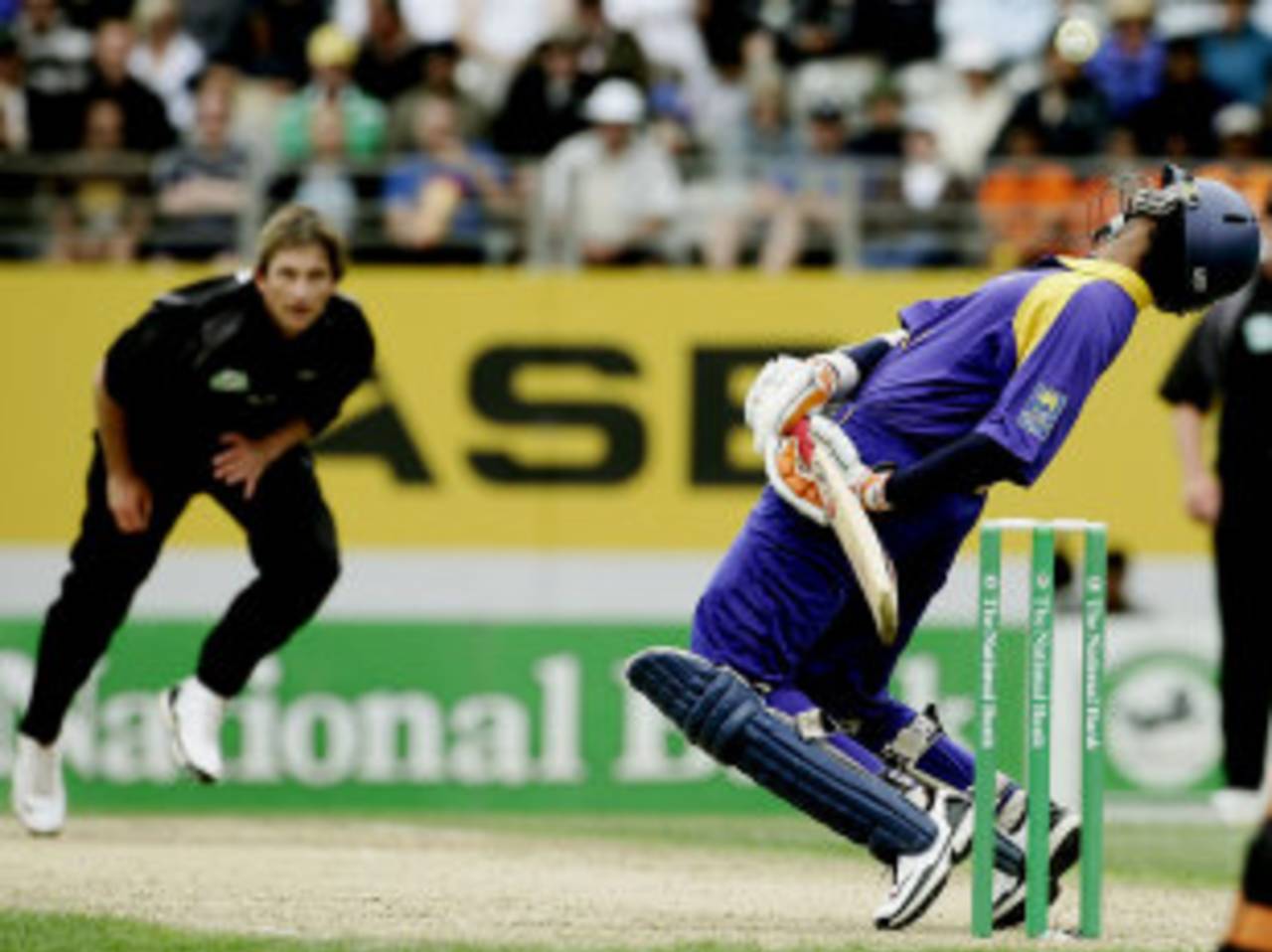The best since Hadlee
We'll never know how great Shane Bond could have been with a more resilient body. We do know he was one of the finest fast bowlers of his time
Brydon Coverdale
14-May-2010

Fear factor: Shane Bond rattled opponents in a way most of his team-mates could not • AFP
Across the road from Seddon Park in Hamilton, there's a sign that says "Return trundlers here". It's in a supermarket car-park and it refers to shopping carts, but it's easy to imagine a parade of New Zealand seamers lining up there upon retirement over the years. Shane Bond won't be joining them. Far from being a trundler, Bond was New Zealand's best fast bowler since Richard Hadlee, and a man who did his finest work against the classiest batsmen of his generation.
In a New Zealand team full of honest toilers and patchy performers, Bond stood out as the one man likely to destroy the opposition. Daniel Vettori is a terrific bowler but opponents are wary of him rather than frightened. Bond had the fear factor. He could bowl well into the 150kph region, swung the new ball with skill, and was a master of the toe-crushing, stump-shattering yorker.
Consider the batsmen he dismissed the most in internationals: Ricky Ponting, Chris Gayle, Ramnaresh Sarwan, Virender Sehwag, Sanath Jayasuriya, Kumar Sangakkara - huge wickets, every one of them. The man at the head of that list was asked earlier this year what New Zealand could do to become more competitive in Tests. Ponting thought the question over for a while, and then replied: "Ask Shane Bond to come back and play, that would be a good start."
He only ever played two Tests against Australia and it was the last series between the teams that was genuinely competitive. New Zealanders will remember with special fondness his regular demolitions of Australia, at a time when they were unquestionably the best side in the world. He took 44 one-day wickets against them at an incredible 15.79, including a match-winning five-for in his debut series and one of only two ODI hat-tricks ever taken by a New Zealander.
Perhaps his most memorable day against Australia came in the 2003 World Cup, when he beat Adam Gilchrist for pace, had Ponting caught at slip with a wonderful fast outswinger, and finished with 6 for 23. They are remarkable figures in any ODI but even more significantly, they came against a team that went through the tournament undefeated.
The downside to his achievements was that he expended so much physical effort that he became as much a fixture of the doctor's waiting room as out-of-date magazines. Often it was his back, but he also had trouble with his feet, knees, abdomen - pretty much anywhere the strain of his unrelenting exertion was felt. It was revealing that earlier this week he told Cricinfo he'd rather have a short, successful career, than prolong it and have his results suffer.
We'll never be sure just how great he could have been, had he been blessed with a more resilient body. We do know that he has the all-time best ODI bowling average for a New Zealander, and his country's lowest Test bowling average with a 50-wicket qualification. The sad part is, make it a 100-wicket minimum and Bond wouldn't qualify. He retired from Tests in December and has now given up all forms.
There was a decade between Hadlee's retirement and the emergence of Bond, and in the meantime, plenty of trundlers were tried and returned. Here's hoping New Zealand don't have to wait ten years for their next great fast bowler to arrive.
Brydon Coverdale is a staff writer at Cricinfo